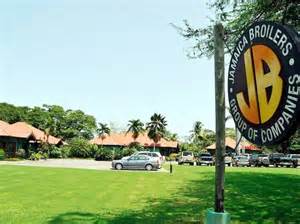 The 5Ps of Professional Service Business Marketing is a model to help you plan and clarify your marketing direction.
The 5Ps of Professional Service Business Marketing is a model to help you plan and clarify your marketing direction.
Each of the examples below has a list of questions to consider when you develop your marketing strategy. Use the following information to help develop your marketing strategy.
Positioning – Communicate with your prospects exactly why they should do business with you.
Packaging – Package and present your services to generate interest and response from qualified prospects.
Promotion – Get more qualified prospects to call who are ready to do business with you now.
Persuasion – Turn those who call you into immediate sales… often over the phone.
Performance – Keep clients coming back and referring others… forever.
Positioning Your Business
Here are five key things to consider when developing the positioning strategy for your business.
• What exactly is your Business Solution? That is, how does your service solve a particular problem, alleviate a pain or add value?
• Who exactly are your potential clients or customers? Where are they; what industry; what size; what needs; what past experience with your kind of service and what buying process?
• What is your Unique Customer Advantage? That is, what differentiates you from your competitors. What do you do better, different, faster, cheaper, with higher quality or with a different spin? Be specific, not vague.
• What is your Business Identity? What are the qualities you want to be known by? Is it integrity and dependability or expertise and exclusiveness? You can’t be everything to everybody. Next ask what you are going to do to live up to these qualities.
• What is your “Phrase that Pays?” What words concisely sum up your positioning strategy in a way that is memorable and meaningful, with both style and content. For Action Plan Marketing it is: “We help you find new clients without spending a fortune.”
Packaging Your Services
Here are five key things to consider when developing the packaging strategy for your business.
• Do you have an attractive and appropriate Business Identity Package consisting of a logo or company masthead on a business card, letterhead and envelopes? This is the look for your businesses and needs to express your identity and positioning strategy.
• Do you have basic marketing materials (or brochure) for your business? These materials should include (but not necessarily be limited to): An overview of the problem that you are seeking a solution for; an overview of your solution; a description of your Unique Customer Advantage; a listing of your key customer benefits; a listing of your various services; testimonials from satisfied clients; a listing of clients or client companies; biographies of company principals; information on how to contact your company and how to do business with you; your address, phone, fax and e-mail numbers.
• Have you designed a basic strategy for what services you’ll offer and what the configuration of those services will be? A three-day workshop; monthly executive coaching and team building retreats. All of these are packages. They need to be clearly defined and laid out.
• Do you have a basic logistical plan for your business? A plan for the office; office hours; telephone message; signage, etc. All of these simple things convey a marketing image to your prospective clients. Create an identity and then package this identity in everything you do.
• Have you put some attention on your personal package, your personal presentation? If you’re a small service business you are selling you. You’re the package. People make a dozen or more assumptions about you and your business in the first few seconds after meeting you in person or talking to you on the phone. Are you walking your talk?
Promoting Your Services
Here are five key things to consider when developing the promotional strategy for your business.
Are you networking enough? For many service businesses, networking is the key promotional technique. Join organizations; get to know people; get involved; keep in touch with people; do what you can to help them; be visible in your community.
Do you have a good, solid marketing letter that highlights your benefits and moves people to take action? This one inexpensive marketing tool is one of the most powerful when written properly.
Do you do personal PR such as speaking and writing? Again, these don’t take much money but pay big dividends. Speak at Rotary, your Chamber of Commerce, at business associations and alumni groups. Write for your local paper; the trade journal of your industry, or even for someone else’s newsletter. You can use the reprints later for credibility.
Are you mailing to people on your list? This is an absolute must. Don’t let people forget who you are and how you can help them. From two to six times a year send clients and prospects a newsletter or other type of keep-in-touch mailing.
Do you have a Web Site? You should. It doesn’t take a lot of money to create a web page and even less to post it. This is a powerful media that can serve as a combination direct mail piece, brochure and newsletter. Given the price of entry, it’s crazy not to have one.
The Persuasion Process
Here are five key things to consider when developing the persuasion strategy for your business.
• Do you have an Audio Logo? When someone asks, “what do you do?” Do you have a concise and powerful solution statement that expresses what you do in a nutshell? A good format is “I help (who you’re clients are) to (what your solution is).”
• Do you have a basic phone approach scripted out? Whether you get incoming calls or make outgoing calls, you need to have a track to run on that takes the call from interest to action. Script it out. Include questions, comments, stories and closes.
• Are people interested in what your business can do for them? They’ll be much more interested if you’re interested in them first. Find out who your prospects are, their situation, their challenges, their problems, their dreams. And then really listen. Really be interested. What naturally follows is their interest in what you can do for them.
• Do you know how to generate desire for your services? Nothing generates desire better than success stories about successful projects. Have them at the ready for over-the-phone or in person meetings.
• Do you wait for people to take action or do you move the action forward? You’ve got to ask; you’ve got to recommend; you’ve got to suggest. However, you don’t need to be pushy or obnoxious. But it can be just as irritating when dealing with a salesperson who never asks for the sale.
Performance in Your Business
Here are five key things to consider when developing the performance strategy for your business.
• Have you found a way to fit marketing into your schedule? Marketing is not a luxury, but a necessity. You must find ways to do a little marketing on an ongoing basis. This may be only a few calls a week and a mailing every few months. But you must do it!
• Do you keep track of both your long and short-term projects (including marketing projects) and review that list daily? Do you prioritize your projects and work on those first that have the highest pay-off?
• Do you have a way of combating procrastination and delay? There is nothing worse than generating work through effective marketing and then getting behind in the work you have generated.
• Do you maintain the highest standards of integrity and excellence? Do you under-promise and over-deliver or visa versa? Your clients will judge you, not on what you promise but, on what you actually do.
• Are you continually working to improve your skills in all areas of your business? Keep up your reading and education for your core professional skills while expanding your knowledge in other areas. Marketing, selling, negotiation, computer, financial and communication skills are important to every business.

 Businessuite Markets2 weeks ago
Businessuite Markets2 weeks ago
 Businessuite News242 weeks ago
Businessuite News242 weeks ago
 Leadership Conversations5 days ago
Leadership Conversations5 days ago
 Businessuite Markets2 weeks ago
Businessuite Markets2 weeks ago
 Logistics & Transportation2 weeks ago
Logistics & Transportation2 weeks ago
 Businessuite Markets2 weeks ago
Businessuite Markets2 weeks ago
 Businessuite News24 International3 weeks ago
Businessuite News24 International3 weeks ago
 Businessuite Markets2 weeks ago
Businessuite Markets2 weeks ago









